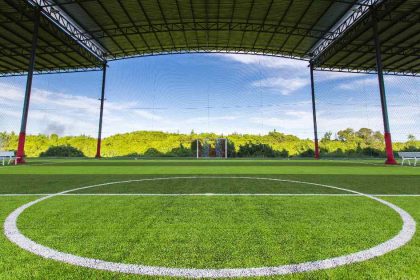Weld Australia is urging the Federal Government to invest in a national network of Indigenous Welding Schools to help create real skills and real jobs for Indigenous Australians—and close the gap.
In response to the Productivity Commission’s first review of the National Agreement on Closing the Gap released this week, Weld Australia says governments are not adequately delivering on their commitment to the Agreement – and that it’s time to ensure Indigenous Australians have the skills needed to secure meaningful jobs.
“The Indigenous Welding Schools initiative not only aligns with the national socio-economic targets of the Closing the Gap agreement – enhancing education, employment, and community development for Indigenous Australians – but also offers a tangible solution to the pressing need for skilled labour in the welding industry,” says Weld Australia CEO Geoff Crittenden.
Australia is facing a looming shortage of skilled welders – 70,000 additional welders will be needed in the next 10 years. Demand is being driven by Defence, Infrastructure and Resource projects and exacerbated by supply chain issues promoting growth in local companies. The upcoming renewable energy boom will further overheat the market.
Combining practical demands with culturally sensitive curriculum
Mr Crittenden says the Indigenous Welding Schools program would be predominantly run by Indigenous educators and trades people who would mesh the practical demands of the welding trade with a culturally appropriate curriculum, pastoral support and employment pathways to deliver gate-ready welders to industry.
Students would graduate qualified and certified to the internationally recognised welding competency standard ISO 9606.
The model and technology would be identical to successful programs already run by Weld Australia, including the VET Centre of Excellence in seven Corrections Victoria prisons, and the NSW Advanced Manufacturing Schools Outreach Program, implemented in more than 65 schools.
A national network of Indigenous Welding Schools could help progress three of the 19 national socio-economic targets outlined in Closing the Gap:
- Students reach their full potential through further education pathways
- Youth are engaged in employment or education
- Strong economic participation and development of people and their communities
Strategic ways to address nationwide skills shortage
Mr Crittenden says welding-specific VET training and employment pathways for Indigenous Australians could help alleviate some of these skills shortages for industry and close the gap for Indigenous Australians.
For the past five years, Mr Crittenden says Weld Australia has approached every government in a bid to secure funding to create a national network of Indigenous Welding Schools that use the latest augmented reality and advanced welding systems.
“We have been largely rebuffed by governments of all persuasions,” he says.
“However, we know that the Albanese Government is genuinely committed to closing the gap for Indigenous Australians. Weld Australia has written to the Albanese Government, urging it recognise the value and necessity of the Indigenous Welding Schools concept. It represents a strategic investment in the future of industry and the empowerment of Indigenous communities, promising real skills for real jobs.”







